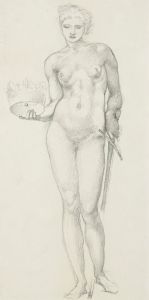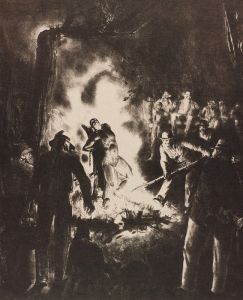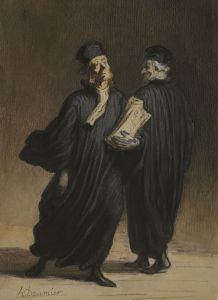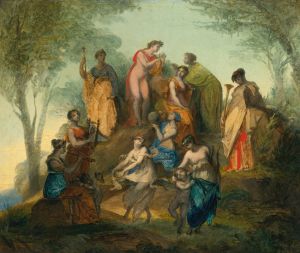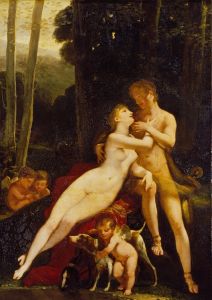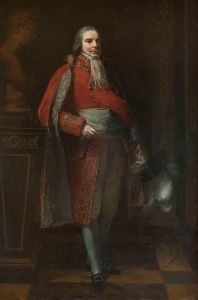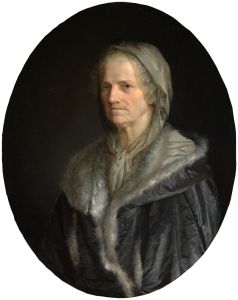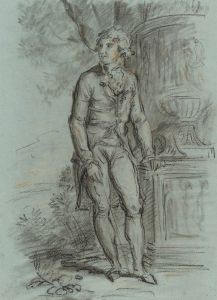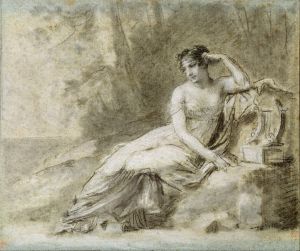
Etude pour La Justice et la Vengeance divine poursuivant le crime
A hand-painted replica of Pierre-Paul Prud'hon’s masterpiece Etude pour La Justice et la Vengeance divine poursuivant le crime, meticulously crafted by professional artists to capture the true essence of the original. Each piece is created with museum-quality canvas and rare mineral pigments, carefully painted by experienced artists with delicate brushstrokes and rich, layered colors to perfectly recreate the texture of the original artwork. Unlike machine-printed reproductions, this hand-painted version brings the painting to life, infused with the artist’s emotions and skill in every stroke. Whether for personal collection or home decoration, it instantly elevates the artistic atmosphere of any space.
"Etude pour La Justice et la Vengeance divine poursuivant le crime" is a study by the French artist Pierre-Paul Prud'hon, who was renowned for his neoclassical style and his ability to convey emotion and drama through his works. Prud'hon, born on April 4, 1758, in Cluny, France, was a prominent figure in the art world during the late 18th and early 19th centuries. He is often celebrated for his unique approach that combined elements of neoclassicism with romanticism, setting his work apart from his contemporaries.
This particular study, "Etude pour La Justice et la Vengeance divine poursuivant le crime," translates to "Study for Justice and Divine Vengeance Pursuing Crime." It is a preparatory work for a larger painting that Prud'hon completed in 1808. The final painting is housed in the Louvre Museum in Paris, which is a testament to its significance and the esteem in which Prud'hon's work is held.
The study, like the final painting, depicts an allegorical scene where the figures of Justice and Divine Vengeance are personified. These figures are shown in pursuit of Crime, illustrating a moral narrative that was common in neoclassical art. Prud'hon's ability to convey complex themes through allegory is evident in this work, as he uses the figures to explore ideas of morality, justice, and retribution.
Prud'hon's technique in this study is notable for its use of chiaroscuro, a method that employs strong contrasts between light and dark to achieve a sense of volume and three-dimensionality. This technique enhances the dramatic effect of the scene, drawing the viewer's attention to the dynamic movement and emotional intensity of the figures. The study likely served as a means for Prud'hon to experiment with composition, lighting, and the portrayal of emotion before executing the final painting.
Throughout his career, Prud'hon was influenced by the works of earlier masters such as Leonardo da Vinci and Raphael, as well as by the neoclassical ideals that were prevalent during his time. However, his work also foreshadowed the romantic movement, with its emphasis on emotion and individual expression. This blend of influences is evident in "Etude pour La Justice et la Vengeance divine poursuivant le crime," where the classical forms are imbued with a sense of drama and movement that hints at romanticism.
Prud'hon's work was highly regarded by his contemporaries, and he received numerous commissions from influential patrons, including Napoleon Bonaparte and Empress Joséphine. Despite his success, Prud'hon's personal life was marked by tragedy, including the mental illness and eventual suicide of his wife, which deeply affected him and is reflected in the somber tone of some of his works.
In summary, "Etude pour La Justice et la Vengeance divine poursuivant le crime" is a significant example of Pierre-Paul Prud'hon's artistic skill and his ability to convey complex allegorical themes. The study not only reflects the neoclassical ideals of its time but also showcases Prud'hon's unique style that bridges the gap between neoclassicism and romanticism.






